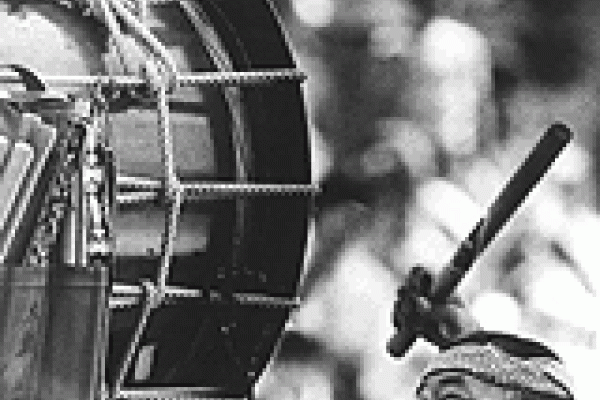Seiichi Tanaka

Photo courtesy of the artist
Bio
Grand Master Seiichi Tanaka or Tanaka-sensei, as he is known by hundreds of taiko followers around the world, established the first taiko dojo (taiko school) in North America in 1968. He was inspired to found a school after attending a Cherry Blossom Festival in San Francisco and realizing that this art form was not represented in the United States. Taiko, a form of ritual drumming, combines percussive sound with physically demanding choreographic movement. Taiko drums of stretched cowhide are similar to instruments that originated 1,400 to 2,000 years ago. They were probably first used as a military tool, but were later incorporated into agricultural rituals to repel evil spirits, encourage bountiful crops, and bring rain. Their rhythms were eventually adopted in the imperial court and were used in Buddhist temples and at Shinto shrines. After World War II, taiko drumming evolved into a more musical form, employing a variety of drums in different sizes and incorporating choreographed performance. Seiichi Tanaka is a central figure in the evolution of the form. The energetic but disciplined performance style of his group -- part dance, part music, part martial arts, part philosophy -- reflects what he calls "the development of the inner muscle." The music of his group has reached a wider audience through such movies as Return of the Jedi and The Right Stuff. Tanaka jokes that at one time he was recognized as the father of taiko but now, with so many students and with over 30 years of teaching the art form, he should be known as the grandfather of taiko.
Seiichi Tanaka: Go For Broke
by Terry Liu
In 1966, Seiichi Tanaka attended his first Japanese community festival in the United States, the Cherry Blossom Festival in San Francisco. He found the color, tastes, and fragrances he remembered from festivals in Japan, but something was missing - the sound of the Japanese drum, taiko. Since the 1950s, kumi-daiko (ensembles of taiko drums of various sizes) had been growing in popularity. In Japanese-American communities in Hawai'i and California, only one taiko drum was used primarily to accompany bon odori, a late-summer dance for ancestors at Buddhist temples

The following year, 1967, Tanaka a small taiko from a local Buddhist temple to play at the festival. The sound of the taiko drum in the context of the community festival resonated with deeply with Japanese-Americans and in subsequent years he took more and more drums with him. In 1968 he formed San Francisco Taiko Dojo, the first North American taiko ensemble. Soon Seiichi Tanaka was traveling around the country to help eager taiko ensembles get going.
Seiichi Tanaka made many trips to Japan to learn taiko technique and was apprentice to some of Japan's most respected "National Cultural Treasures" and taiko masters including Grand Master Daihachi Oguchi of Suwa Taiko, Master Susumu Kowase of Sukeroku, and Grand Master Shosaku Ideka, of Gojinjo Taiko.
The distinctive style of Seiichi Tanaka's taiko playing and teaching involve more than skill and choreography. Master Tanaka says, "Teaching the discipline of mind and body, in the spirit of complete respect and unity among the drummers, that is my policy. Heart, skill, physical strength, and courtesy - these four elements are based on Japanese martial arts. I have the same philosophy for my taiko." Mottoes his students often hear are "No pain, no gain," and "Go for Broke."
Kinnara Taiko was established in the Senshin Buddhist temple in Los Angeles in 1969 and became a model for attracting young people and teaching them Buddhist lessons through taiko. San Jose Taiko was founded in 1973 set a standard for professional taiko creating a new Japanese-American art form. The rapid development of taiko ensembles in Japan was paralleled in America. Today, there around 120 taiko groups in the United States and Canada, and most trace their roots back in one way or another to Grand Master Seiichi Tanaka and his San Francisco Taiko Dojo.
Taiko are hand-crafted by guilds in Japan and importing them is too expensive for most groups in America. On one of his visits to Kinnara Taiko in Los Angeles in the 1970s, he found Rev. Masao Kodani and his young members trying to make taiko out of old wine barrels and California cow hide. Tanaka showed them how to rig up car jacks to stretch the hide to a sufficient degree of tension. Beautiful, sonorous, and yet economical wine barrel taiko were thus a result if American-Japanese ingenuity and were key to the proliferation of taiko groups.
Master Tanaka says that his National Heritage Fellowship is recognizes the contribution that all America taiko groups have made. It was news when the 2001 Taiko Conference convened at the Japanese America Cultural and Community Center in Los Angeles last summer and on September 2, 2001, the National Heritage Fellowship to Seiichi Tanaka was mentioned during San Francisco Taiko Dojo's participation at the Taiko Federation in Japan. The significance of the recognition by the National Endowment for the Arts of Seiichi Tanaka will quickly reach hundreds of taiko ensembles in America and thousands more in Japan and throughout the world.

